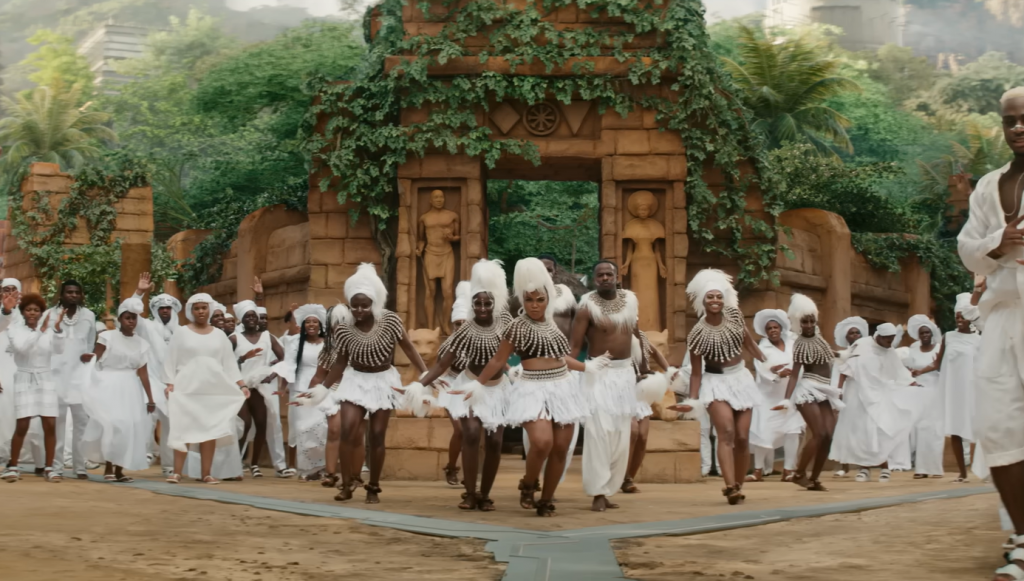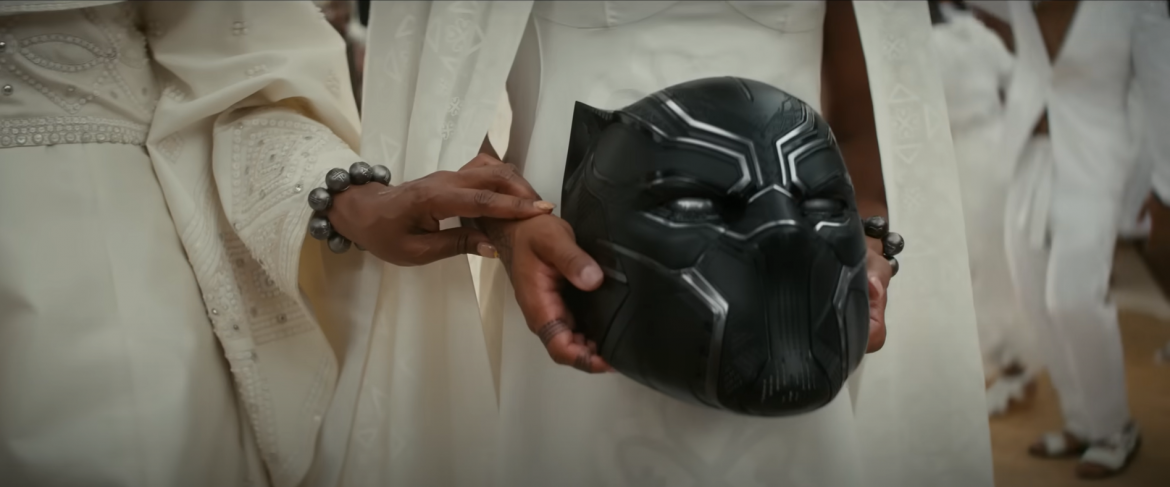Is ‘Wakanda Forever‘ a strong enough sequel to the 2018 powerhouse film that made a strong statement for the African community?
How can the most powerful film studio in the world immortalize the legacy of one of its promising actors who left the world too soon? Black Panther: Wakanda Forever had heavier tasks to fulfill after the untimely death of Chadwick Boseman. While Wakanda Forever aches as it carries its emotional baggage of grief, the film had too much on its plate to make a strong sequel to the 2018 powerhouse film.
The King of Wakanda is dead but in Wakanda Forever, his legacy lives on as his death is the beginning of a new hope. Unlike the tragic heroic death of Iron Man in Avengers: Endgame, the passing of Black Panther pierces through the heart. Wakanda lost T’Challa. Boseman is not with us anymore. The formation of the “Marvel Studios” logo, the loud and grand introduction that starts with its comic book roots then switches to remarkable scenes of the culturally gargantuan cinematic universe, opted for a silent, solemn montage of the Boseman as the Wakandan hero that inspired millions of people, particularly the African community.
Talented storyteller Ryan Coogler is back in the director’s chair not just to continue the story of Black Panther but to make sure that Boseman’s presence is felt all throughout the film.
Wakanda Forever initially started with a heartbreaking yet apt and respectful tribute to Boseman. Coogler masterfully balances mourning and celebration of life for the king. From the intense, uninterrupted opening scene of Shuri (Letitia Wright) failing to heal her brother from an undisclosed disease to the lively Ghanian-inspired funeral procession, Wakanda Forever showcases the legacy of T’Challa in the Afrofuturistic country. His physical body is not with them anymore, but his spirit will continuously inspire Wakandans to continue thriving, just like how Boseman broke the glass ceiling for the African community and left a mark in the Caucasian-dominated cinematic universe. They can also save the world and not be limited to subjects of abuse as portrayed in the media.
The funeral rites ended with T’Challa’s coffin rising to a huge, African indigenous mask shaped Wakandan airship. Wakandans lift their heads and watch their king ascend. Except for Shuri, looking at the ground and sobbing, still in disbelief that her king but most importantly, her brother is not with her anymore. Wright embodied Shuri’s shock, pain, and guilt of being the top scientist in Wakanda but still failing to synthetically create the heart-shaped orb that could have saved T’Challa. Her performance brought us back to August 2020 when the world was in disbelief of Boseman’s passing. It was sudden. No one, but his family and close friends, saw it coming. Maybe we could have done something to prevent it.
A year has passed. Everyone moved forward from T’Challa’s death but not Shuri. She and Queen Ramonda (Angela Bassett) went to a hidden shore in Wakanda to burn their funeral ceremonial robe, a Wakandan tradition that marks the final stage of mourning: moving on from the death of a loved one. Shuri refused. It’s not only because the brilliant scientist finds a paganistic activity about death absurd, Shuri doesn’t want the pain and guilt to go away as she equates it to remembering T’Challa. Why is she being mandated to move on? Why is there a deadline for grief?
I thought Wakanda Forever was with us in processing grief until a muscular man with pointed ears and ankle wings emerged from the seas. Namor (Tenoch Huerta) proposed an alliance with Wakanda after they killed CIA and U.S. Navy Seal forces for trying to harvest vibranium in the Atlantic Sea. Unknown to the majority of the world, even to Shuri and Ramonda, there are sources of vibranium outside Wakanda. It can also be found under the sea. It is an essential source for Namor’s Atlantis-inspired underwater city of Talokan. Namor gave Ramonda and Shuri two options: Join forces together in battling the forces that kept on attempting to steal their precious vibranium or Talokan will attack Wakanda. He gave the new leaders of Wakanda some time to think about his proposal and left the bulky vibranium detector they obtained from the CIA and US Navy Seal forces. Shuri has a new mission: to look for the American scientist who created this equipment. She and Okoye (Danai Gurira), the leader of the all-female Wakandan military located the person behind the vibranium detector: a young female student at MIT named Riri Williams (Dominique Thorne). For Marvel fans, they know this is the introduction of Ironheart in the cinematic universe.

Wait, what happened with the film tackling death and grief? Ah, one must not forget that it is, after all, a Marvel film. Don’t be fooled by the solemn Boseman montage at the start of the film; It still formed into a Marvel Studios logo.
Wakanda Forever is stuck in the usual Marvel formula of adrenaline-packed fight scenes, mandatory comedic beats in dialogues, and the introduction of numerous characters that will challenge the physical and mental capacity of our protagonists.
In the almost three-hour action epic, Wakanda Forever struggled to examine grief as it clumsily juggled the themes of colonialism, Western imperialism, and feminism while fulfilling its Marvel film tasks.

Its 2018 predecessor made a cultural dent not only because of its powerful representation of Black excellence but also for its relevant story that spurred geopolitical and racial discourse among the public. Black Panther proved that it could stand on its own in the MCEU.
One of the major factors behind Black Panther’s quality success is its nuanced, complex, and reasonable villain in the form of Killmonger (which remains one of the best, if not the best, Marvel cinematic villains of all time). The film framed Namor, the leader of the blue-skinned water-breathing superhumans of Talokan, as the successor to Killmonger’s role. Just like Michael B. Jordan’s game-changing Marvel character, Namor, a son of a Mayan tribe member in Mexico, is a victim of historical injustice. His painful past motivates him to protect Talokan and its source of vibranium from outsiders.
But is Namor the real antagonist of the film? After all, Talokans are just victims of greedy Western forces who are protecting their most essential resource. Wakanda Forever is not blind to the truth that Wakanda and Talokan could be living peacefully on their own if it weren’t for the Western governments numerously attempting to obtain vibranium.
But where’s the excitement in framing the non-superhero politicians and law enforcement agents as the villains in a superhero film? The CIA, presented in the film by the strong-willed Valentina (Julia Louis-Dreyfus) and her ex-husband Everett K. Ross (Martin Freeman), was featured in dragging, anti-climactic, and out-of-place scenes filled with lengthy, tense-free discussions about vibranium and Wakanda. Their agency is the threat of Wakanda and Talokan but Valentina and Everett were only portrayed as expositions or punchlines for race-related jokes meant to poke fun at white supremacy.
The uninteresting CIA, then, cannot lead the film to its perennial large-scale final act battle, right? So Wakanda Forever dumbed down Namor with his questionable warning of attacking Wakanda if they won’t cooperate, instead of, you know, targeting the root cause of their problem?
Did Coogler, the man involved in the making of Black experience-centered films Fruitvale Station and Judas and the Black Messiah, struggle to establish his clear disdain against the systemic racism caused by the U.S. government agencies? Or did Marvel, the influential storyteller behind patriotic American superhero stories Iron Man and Captain America, tone down the director’s jabs?
But after all the fighting and making compromises, Wakanda Forever brings us back to its goal of remembering T’Challa. Solitude is essential for Shuri as we, the audience, spiritually join her in processing death. Are we finally moving forward? Or the better question is, can we stall that process? Is it good to let grief accompany us in remembering all the good memories with someone who’s not with us anymore? We ponder these questions as we hear the rustles of a burning cloth and Rihanna’s comeback ballad Lift Me Up plays in the background.
T’Challa is gone. We wouldn’t see Boseman’s charm and talent anymore. Let that sink in, slowly. Don’t try to escape this sorrow. As said in the Disney Plus series Wandavision, what is grief is not love persevering?
Or don’t. Whether we like it or not, Wakanda Forever wants the audience to wipe their tears immediately by presenting an optimistic future for our characters in the mid-credits scene. Why can’t Marvel let us wallow in sadness? Why are they rushing us to cling to a new hope? How cowardly of them to feed the audience an unnecessary saccharine conclusion instead of letting emotions overtake the characters and the audience even for just a while. T’Challa is gone. Boseman is gone. Let us grieve.
Black Panther: Wakanda Forever is still showing in theaters nationwide.



